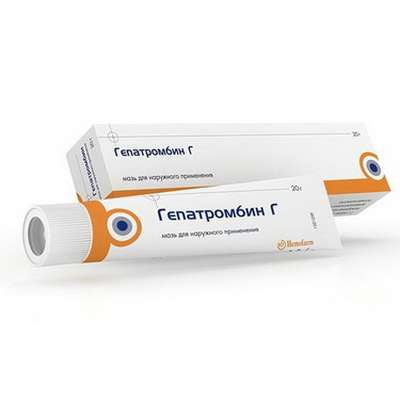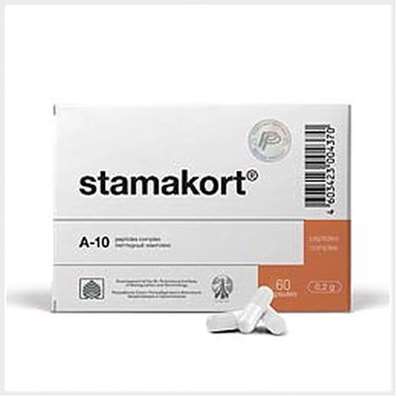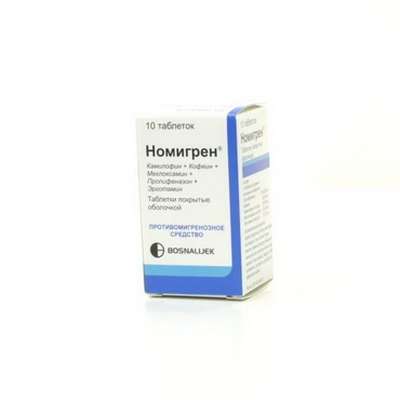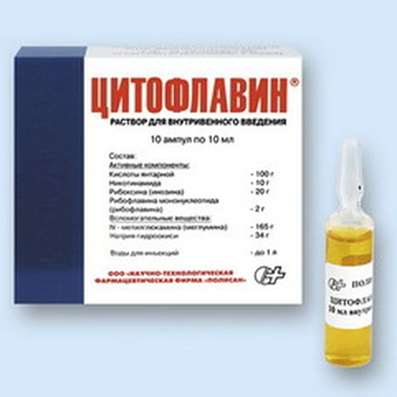Instruction for use: Levocetirizine
I want this, give me price
Dosage form: Film-coated tablets
Active substance: Levocetirizinum*
ATX
R06AE09 Levocetirizine
Pharmacological groups:
Antiallergic agent - H1-histamine receptor blocker [H1-antihistamines]
The nosological classification (ICD-10)
H04.9 Illness of lacrimal apparatus, unspecified: Insufficient production of tear fluid; Insufficient lacrimation; Red eye syndrome; Lachrymation; Dryness of the anterior surface of the eye
H10.1 Acute atopic conjunctivitis: Allergic conjunctivitis; Allergic eye diseases; Allergic conjunctivitis; Allergic conjunctivitis caused by chemical and physical factors; Allergic rhinoconjunctivitis; Allergic inflammation of the eyes; Spring Qatar; Spring keratitis; Spring conjunctivitis; Conjunctivitis allergic; Year-round allergic conjunctivitis; Exacerbation of pollinosis in the form of rhinoconjunctival syndrome; Acute allergic keratoconjunctivitis; Acute allergic conjunctivitis; Superficial bacterial infection of the eyes; Rhinoconjunctivitis; Seasonal allergic conjunctivitis; Seasonal conjunctivitis; SENSORY; Chronic allergic keratoconjunctivitis; Chronic allergic conjunctivitis
H11.4 Other conjunctival vascular diseases and cysts: Edema of the conjunctiva; Secondary hyperemia of the eye; Hyperemia of the conjunctiva; Hyperemia of the membranes of the eye
J00 Acute nasopharyngitis [rhinitis]: Viral rhinitis;Inflammation of the nasopharynx; Inflammatory Nose Disease; Purulent rhinitis; Nasal congestion; Nasal congestion due to cold and flu; Difficulty with nasal breathing; Difficulty with nasal breathing for colds; Difficult nasal breathing; Difficult nasal breathing for colds; Nasal hypersecretion; Coryza; ARI with phenomena of rhinitis; Acute rhinitis; Acute rhinitis of various origins; Acute rhinitis with thick purulent-mucous exudate; Acute rhinopharyngitis; Edema of the mucous membrane of the nasopharynx; Rhinitis; Rhinorrhea; Infectious-inflammatory disease of ENT organs;Severe cold; Rhinopharyngitis
J30 Vasomotor and allergic rhinitis: Allergic rhinopathy; Allergic rhinosinusopathy; Allergic diseases of the upper respiratory tract; Allergic rhinitis; Allergic rhinitis seasonal; Vasomotor runny nose; Prolonged allergic rhinitis; All-year-round allergic rhinitis; All-year allergic rhinitis; Year-round or seasonal allergic rhinitis; All-the-year-round rhinitis of an allergic nature; Rhinitis vasomotor allergic; Exacerbation of pollinosis in the form of rhinoconjunctival syndrome; Acute allergic rhinitis; Edema of the nasal mucosa; Edema of the nasal mucosa; Edema of the mucous membrane of the nasal cavity; Swelling of the nasal mucosa; Swelling of the nasal mucosa; Pollinosis; Permanent allergic rhinitis; Rhinoconjunctivitis; Rhinosinusitis; Rhinosinusopathy; Seasonal allergic rhinitis; Seasonal allergic rhinitis; Hay rhinitis; Chronic allergic rhinitis; Allergic diseases of the respiratory tract
J30.1 Allergic rhinitis caused by pollen of plants: Hay fever; Hay fungus; hay fever; Hypersensitivity to pollen of plants; Polyposis allergic rhinosinusitis; Seasonal pollinosis; Seasonal rhinitis
J30.2 Other seasonal allergic rhinitis: Allergic rhinitis seasonal; Seasonal rhinitis of an allergic nature
J30.3 Other allergic rhinitis: Allergic rhinitis year-round; Allergic rhinoconjunctivitis
L29 Itching: Itching with partial obstruction of the biliary tract; Dermatitis itchy; Dermatosis with persistent itching; Other itching dermatoses; Itching dermatoses; Itching allergic dermatosis; Itching dermatitis; Itching dermatosis; Itching itch; Excruciating itching; Severe itching; Endogenous itching; Skin itching with dermatosis; Restricted itchy dermatitis; Itching of the skin; Itchy scalp; Itching eczema
L29.8 Other itching: Itching of the eye; Itching of the conjunctiva; Itching of the palate; Itching of the nose; Itching of the nasal mucosa; Itchy syringe; Itchy pruritus
L50 Urticaria: Idiopathic chronic urticarial; Injury Urticaria; Chronic urticarial; Hives of the newborn
R06.7 Sneezing: Sneezing
R21 Rash and other nonspecific skin rashes: Skin rash; Skin and mucous eruptions; Skin rashes; Drug rash; Medicinal rash fixed; Dry skin rashes; Rash; Toxidermy; Toxicoderma; Toxic rash; Korepodobnye rashes from drugs; Macular Papular Eruptions; Drug-induced rash
Composition
Tablets covered with a film coating.
active substance: Levocetirizine dihydrochloride 5 mg
Auxiliary substances: MCC - 53.2 mg; Croscarmellose sodium - 3.8 mg; Pregelatinized starch 32.04 mg; Silicon dioxide colloid - 0.48 mg; Magnesium stearate 0.48 mg
Shell: Opadry II white (lactose monohydrate - 1.37 mg, hypromellose - 1.06 mg, titanium dioxide - 0.99 mg, macrogol 3000 - 0.38 mg) - 3.8 mg
Description of dosage form
Round biconvex tablets, covered with a film coating of white color. On the cross-section - the inner layer is white or almost white.
Pharmachologic effect
Mode action - antiallergic, H1-antihistamine.
Pharmacodynamics
Levocetirizine is the R-enantiomer of cetirizine; A competitive histamine antagonist; Blocks H1-histamine receptors, affinity for which is 2 times higher than that of cetirizine. Levocetirizine influences the histamine-dependent stage of allergic reactions; Reduces the migration of eosinophils, vascular permeability, limits the release of inflammatory mediators. Prevents development and facilitates the course of allergic reactions, has an antiexudative, antipruritic effect; Practically does not have anticholinergic and antiserotonin action. In therapeutic doses, it practically does not have a sedative effect.
Pharmacokinetics
Pharmacokinetic parameters of levocetirizine vary linearly, depending on the dose, and practically do not differ from the pharmacokinetics of cetirizine.
Absorption. Quickly and completely absorbed when taken orally. Eating does not affect the fullness of absorption, but reduces its speed. Cmax in blood plasma is achieved after 0.9 hours and is 270 ng / ml. A constant level of drug concentration is achieved after 2 days of intake.
Distribution. Binding to blood plasma proteins - 90%. Vd is 0.4 l / kg. Bioavailability reaches 100%. Penetrates into breast milk.
Metabolism. Less than 14% of the drug is metabolized in the liver by N- and O-dealkylation to form a pharmacologically inactive metabolite. Because of the low level of metabolism and the lack of a metabolic potential (in its metabolism, the cytochrome system is minimally involved), interaction of levocetirizine with other drugs is unlikely.
Excretion. In adults, T1 / 2 is (7.9 ± 1.9) h, and the total clearance is 0.63 ml / min / kg, in small children T1 / 2 is shortened. About 85.4% of the accepted dose of the drug is excreted by the kidneys, about 12.9% - through the intestine.
Special patient groups
Renal insufficiency. With renal failure (Cl creatinine <40 ml / min), clearance decreases (in patients on hemodialysis - by 80%), T1 / 2 is lengthened. Less than 10% of levocetirizine is removed during a standard 4-hour hemodialysis procedure.
Children. Data on the study of the pharmacokinetics of the drug in 14 children aged 6 to 11 years with a body weight of 20 to 40 kg with oral administration of a single dose of 5 mg of levocetirizine showed that the Cmax and AUC values were about twice as high as in healthy adults with a cross Control. The data obtained during the analysis showed that taking the drug at a dose of 1.25 mg in children aged 6 months to 5 years resulted in a plasma concentration corresponding to that in adults when taking 5 mg of the drug once a day.
Elderly patients. Data on pharmacokinetics in elderly patients are limited. With the repeated admission of 30 mg of levocetirizine once a day for 6 days in 9 elderly patients (age 65 to 74 years), the overall clearance was approximately 33% lower than that in older adults. It was shown that the distribution of the racemate of cetirizine depends more on the kidney function than on age. This statement can also be applied to levocetirizine, tk. Both drugs and levocetirizine, and cetirizine are excreted mainly in the urine. Therefore, in elderly patients the dose of levocetirizine should be adjusted depending on the function of the kidneys.
Indications of the Levocetirizine
Treatment of symptoms of year-round (persistent) and seasonal (intermittent) allergic rhinitis and allergic conjunctivitis such as itching, sneezing, nasal congestion, rhinorrhea, lacrimation, conjunctival hyperemia;
Pollinosis (hay fever);
hives;
Allergic dermatosis, accompanied by itching and rashes.
If necessary, consult a doctor before using the medication.
Contraindications
Hypersensitivity to the active substance, cetirizine, hydroxyzine, any piperazine derivative or any auxiliary substance of the preparation;
Terminal stage of renal failure (Cl creatinine <10 ml / min);
Deficiency of lactase, lactose intolerance, glucose-galactose malabsorption;
Children under 6 years of age (due to limited data on effectiveness and safety).
With caution: chronic renal failure (correction of dosing regimen is necessary); Patients of advanced age (with an age-related decrease in CF), with simultaneous use of alcohol (see "Interaction"); Patients with spinal cord injury, prostatic hyperplasia, and other predisposing factors to urinary retention, since levocetirizine may increase the risk of urinary retention; Pregnant women and the period of breastfeeding.
Application in pregnancy and lactation
Data on the use of levocetirizine during pregnancy are limited (less than 300 pregnancies). However, the use of cetirizine, the racemate of levocetirizine in pregnancy (more than 1000 pregnancies), was not accompanied by malformations and intrauterine and neonatal toxic effects. In animal studies, there is no direct or indirect adverse effect on the course of pregnancy, embryonic and fetal development, childbirth and postnatal development.
Care should be taken when taking levocetirizine with pregnant women.
Cetirizine, the racemate of levocetirizine, is excreted in breast milk. Therefore, it is also likely the isolation of levocetirizine with breast milk. Children who are breastfed may experience side effects on levocetirizine. Therefore, care should be taken when prescribing levocetirizine during breastfeeding.
Fertility. Clinical data on levocetirizine are absent.
Side effects
Clinical researches
During clinical trials in men and women 12-71 years with a frequency of 1% or more (often> 1/100, <1/10) - there were headache, drowsiness, dry mouth, fatigue; Infrequently (≥1 / 1000, <1/100) - asthenia and abdominal pain.
During clinical trials in children 6 to 12 years old with a frequency of 1% or more (often ≥1 / 100, <1/10) - there was headache and drowsiness.
Post-marketing research
The frequency of side effects is unknown (cannot be estimated from available data).
From the immune system: hypersensitivity reactions, including anaphylaxis.
From the side of metabolism and nutrition: increased appetite.
From the side of the psyche: anxiety, aggression, agitation, depression, hallucinations, insomnia, suicidal thoughts.
From the side of the nervous system: convulsions, thrombosis of the sinuses of the dura mater, paresthesia, dizziness, fainting, tremor, dysgeusia.
From the organs of hearing and balance: vertigo.
From the side of the organ of vision: visual impairment, indistinct visual perception, inflammatory manifestations.
From the CVS: angina, tachycardia, palpitation, thrombosis of the jugular vein.
On the part of the respiratory system: dyspnea, increased symptoms of rhinitis.
From the digestive system: nausea, vomiting, diarrhea.
Hepatobiliary disorders: hepatitis, changes in functional liver samples.
From the kidneys and urinary system: dysuria, urine retention.
From the skin and soft tissues: persistent drug erythema, pruritus, rash, hives, hypotrichosis, cracks, photosensitivity.
From the musculoskeletal system: muscle pain, arthralgia.
General disorders: peripheral edema, weight gain.
Other: cross reactivity, angioedema.
If any of the side effects listed in the manual are aggravated or any other side effects not indicated in the instructions are noted, you should notify the doctor.
Interaction
The interaction of levocetirizine with other drugs has not been studied. In the study of the drug interaction of the racemate cetirizine with phenazone, pseudoephedrine, cimetidine, ketoconazole, erythromycin, azithromycin, glipizide and diazepam, no clinically relevant undesirable interactions have been identified.
With simultaneous appointment with theophylline (400 mg / day), the total clearance of cetirizine is reduced by 16% (theophylline kinetics does not change).
In the study, while taking ritonavir (600 mg twice daily) and cetirizine (10 mg / day), it was shown that the exposure of cetirizine increased by 40%, and the exposure of ritonavir slightly changed (-11%).
In some cases, while using levocetirizine with alcohol, drugs that have an overwhelming effect on the central nervous system, it is possible to develop retardation and worsen performance.
Dosing and Administration
Inside, during meals or on an empty stomach, without chewing, squeezed a little water. The daily dose is recommended for 1 reception.
Adults and children over 6 years of age: daily dose is 5 mg. The maximum daily dose is 5 mg. Children under the age of 6 years are not prescribed pills, but use a liquid dosage form.
Since levocetirizine is excreted from the body by the kidneys, when the drug is prescribed for patients with renal insufficiency and elderly patients, the dose should be adjusted depending on the amount of creatinine clearance.
The creatinine clearance for men can be calculated based on the serum creatinine concentration by the following formula:
The creatinine clearance for women can be calculated by multiplying the obtained value by a factor of 0.85.
With normal renal function, Cl creatinine is> 80 ml / min, the dose for this condition is 5 mg / day.
| Renal insufficiency | Clcreatinine, ml/min | Dose and multiplicity of admission |
| Lightweight | 50–79 | 5 mg / day |
| Average | 30–49 | 5 mg once in 2 days |
| Heavy | <30 | 5 mg every 3 days |
| Terminal stage - patients on hemodialysis | <10 | The drug is contraindicated |
In patients with renal and hepatic insufficiency, dosing is performed in accordance with the dosing regimen shown in the table. If the patient is only affected by liver function, then correction of the dosing regimen is not required.
In the treatment of seasonal (intermittent) rhinitis (the presence of symptoms less than 4 days a week or a total duration of less than 4 weeks), the duration of treatment depends on the duration of the symptomatology: treatment can be discontinued with the disappearance of symptoms and resumed when they occur.
In the treatment of year-round (persistent) allergic rhinitis (the presence of symptoms more than 4 days a week and their total duration of more than 4 weeks) treatment can continue throughout the exposure period of allergens.
There is a clinical experience of the continuous use of levocetirizine in a dose of 5 mg (in the form of a tablet coated with film) in adult patients of up to 6 months.
Use the drug only according to the method of administration and at the doses specified in the instructions.
If you missed taking the drug, you should not take a double dose to compensate for missed, you must take the next dose at the usual time.
If there is no improvement after treatment or new symptoms appear, you should consult your doctor.
Overdose
Symptoms: drowsiness (in adults), agitation and anxiety, followed by drowsiness (in children).
Treatment: immediately after taking the medication inside, it is necessary to rinse the stomach or induce vomiting. Symptomatic and maintenance therapy is recommended. There is no specific antidote. Hemodialysis is ineffective.
Special instructions
Intervals between doses should be selected individually, depending on the renal function.
During treatment it is recommended to refrain from using ethanol (alcohol).
Levocetirizine tablets contain lactose monohydrate, so they should not be prescribed to patients with lactose intolerance, hereditary lactase deficiency or glucose-galactose malabsorption syndrome.
If patients have predisposing factors to urinary retention (eg spinal cord injury, prostatic hyperplasia), caution should be exercised, since levocetirizine may increase the risk of urinary retention.
Influence on ability to operate vehicles, mechanisms. Levocetirizine can lead to increased drowsiness, therefore, the drug may have an effect on the ability to drive a car or work with machinery. During the intake of Levocetirizine, it is advisable to refrain from carrying out potentially dangerous jobs requiring an increased concentration of attention and speed of the psychomotor reaction (including driving and controlling the mechanisms).
Release form
Film coated tablets 5 mg.
For 10 tab. In a planar cell box made of PVC film and foil of aluminum printed lacquered. 1 or 3 contour squares are placed in a pack of cardboard.
Manufacturer
ZAO ALSI Pharma.
Conditions of leave from pharmacies
Without recipe.
Storage conditions of the drug Levocetirizine
At a temperature of no higher than 25 ° C, in the original packaging.
Keep out of the reach of children.
Shelf life of the drug Levocetirizine
3 years.
Do not use after the expiry date printed on the package.

 Cart
Cart





